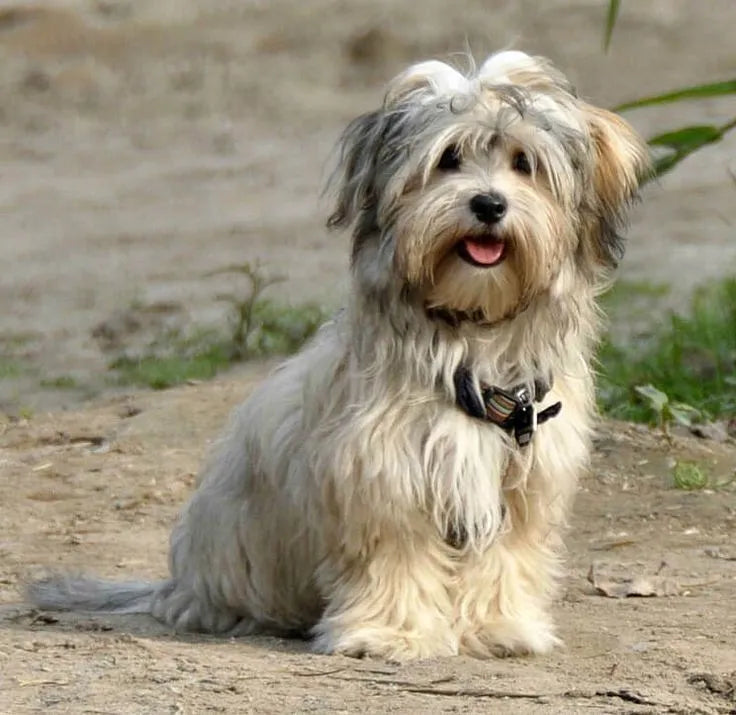Havanese
America’s Cheerful and Hypoallergenic Companion
1. Introduction to the Breed
The Havanese, securing the #23 spot in the 2024 American Kennel Club (AKC) rankings, is a cheerful and hypoallergenic breed cherished for its playful personality and silky coat. Known as Cuba’s national dog, Havanese captivate with their lively demeanor and compact size, making them ideal for first-time owners, families, and urban dwellers. Their affectionate nature and adaptability shine in apartments or suburban homes, bringing joy and companionship to a wide range of households.
2. History of the Breed
Originating in Havana, Cuba, in the 18th century, Havanese were bred as lap dogs for wealthy Cuban families, descending from Bichon-type dogs brought by European settlers. Nearly extinct after the Cuban Revolution, the breed was preserved by Cuban immigrants in the U.S. Recognized by the AKC in 1996, Havanese gained popularity for their charming personality and hypoallergenic coat, appearing in dog shows and as therapy dogs. Their association with the Obama family, who considered the breed, boosted their fame in America.
3. Physical Characteristics
- Typical Size and Weight: Havanese are small, standing 8.5–11.5 inches tall at the shoulder and weighing 7–13 pounds for both males and females, with a sturdy yet delicate build.
- Coat and Color: Their long, silky, hypoallergenic coat is soft and wavy, in colors like white, cream, black, chocolate, or multicolored patterns. The coat can be kept long or clipped short for easier care.
- Distinctive Features: Havanese have a rounded head, expressive dark eyes, and drop ears framed by their flowing coat. Their plumed tail, carried over the back, adds to their elegant, playful look.
4. Personality Traits
Havanese are cheerful, affectionate, and social, with a lively personality that makes them exceptional family pets. They form strong bonds with owners, thriving on interaction with children, adults, and other pets, and are rarely aggressive. Their alert nature may lead to barking at strangers, but their friendly disposition makes them poor guard dogs. Havanese are intelligent and adaptable, enjoying playtime but content with cuddling, suiting owners who can provide attention and a nurturing environment to prevent separation anxiety.
5. Care Requirements
- Exercise Needs: Havanese need 30–60 minutes of daily exercise, such as short walks, indoor play, or light fetch games. Mental stimulation through training or puzzle toys keeps their curious minds engaged.
- Grooming Needs: Their coat requires daily brushing to prevent matting, with professional grooming every 4–6 weeks for long coats or shorter pet clips. Regular ear cleaning, nail trimming, and dental care are essential to prevent infections and dental issues.
- Dietary Considerations: A small-breed diet with high-quality proteins supports their energy and coat health. Portion control prevents obesity, and foods with omega fatty acids reduce skin sensitivities, as they’re prone to allergies. Avoid table scraps to maintain digestive health.
6. Health and Lifespan
Havanese have an average lifespan of 14–16 years. Common health issues include patellar luxation, cataracts, liver shunts, and dental disease. Their small size makes them prone to injuries from rough handling. Regular vet checkups, dental cleanings, and genetic screenings mitigate risks. Owners should monitor for eye tearing, limping, or dental issues and ensure a safe environment to protect their delicate frame. A balanced diet supports their long-term health.
7. Training and Socialization
Havanese are intelligent and eager to please, making them highly trainable with positive reinforcement using treats or praise. Short, fun sessions keep their attention, as their playful nature can lead to distraction. Early socialization ensures comfort with strangers, children, and other animals, reducing excessive barking or shyness. Teaching commands like “quiet” and “stay” helps manage their alert tendencies. Gentle training and consistent socialization create a well-mannered, confident Havanese.
8. Ideal Home Environment
Havanese thrive in apartments or small homes, making them ideal for urban dwellers, seniors, or families with older children. Their small size suits cozy indoor spaces with soft bedding for lounging. A secure, small yard is sufficient for play, but they prefer staying close to their owners. Owners should provide a nurturing, social environment to prevent separation anxiety and ensure a safe setting to protect their delicate build.
9. What’s the Best Toy for My Havanese?
Havanese enjoy toys that suit their cheerful, playful nature and small size. Soft chew toys made of gentle rubber satisfy their mild chewing instincts, providing 10–15 minutes of engagement, especially when stuffed with treats for light mental stimulation. Plush toys without squeakers are ideal for cuddling or gentle tossing, perfect for 10–15 minute indoor play sessions to match their moderate energy. Small, lightweight balls for rolling encourage light chasing, suitable for their delicate build. Interactive puzzle toys with treat compartments engage their curious minds, keeping them occupied for 10–15 minutes indoors. Avoid hard or oversized toys that could harm their tiny jaws. Rotate toys regularly and pair with gentle games to maintain engagement.
10. Adoption and Breeder Tips
Choose breeders affiliated with the Havanese Club of America, ensuring health clearances for eyes, knees, liver, and heart conditions. Visit the breeder to assess puppy health, meet parents for temperament insights, and confirm ethical practices, including socialization and clean facilities. Rescues like Havanese-specific organizations offer adoptable dogs, often with known histories. Avoid puppy mills, as Havanese are prone to health issues if poorly bred. Ask about genetic testing, coat care, and socialization practices to ensure a healthy, well-adjusted dog suited to your lifestyle.
